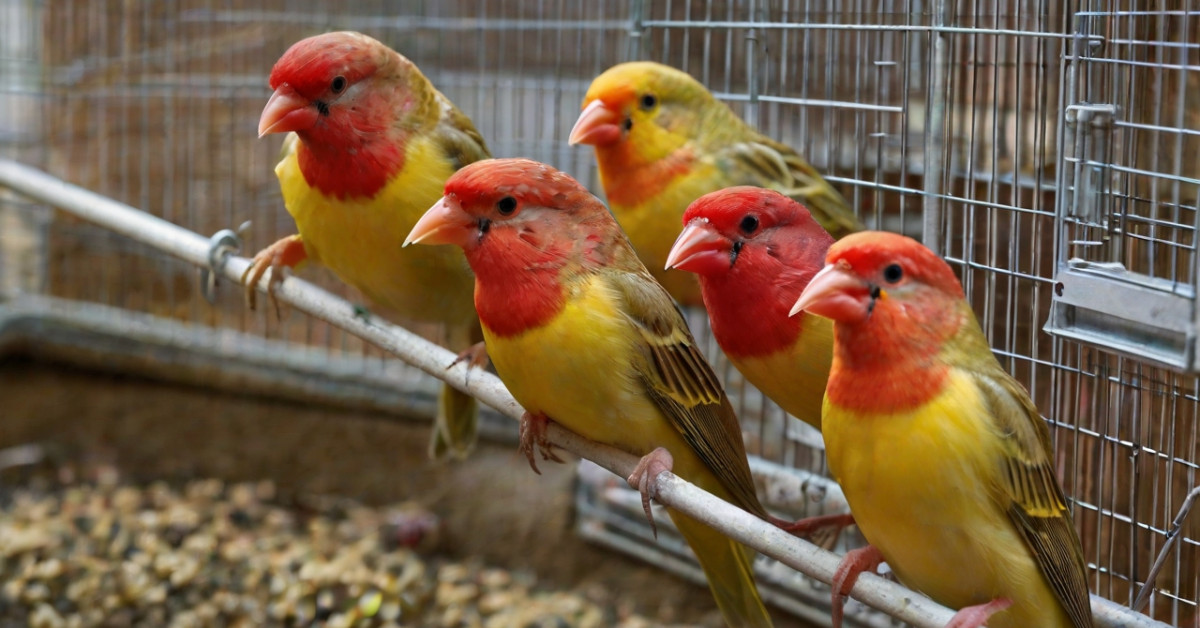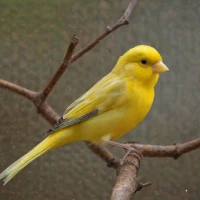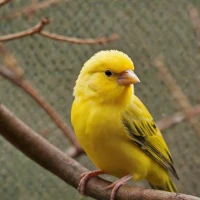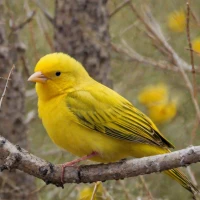Welcome to the World of Red Canaries: Housing and Cages
Red canaries, those delightful little songbirds with their vibrant plumage and melodic tunes, have always fascinated me. From the moment I saw my first red canary at a local bird show, I knew these birds were something special. Allow me to take you on a journey through the ideal housing and cages for red canaries – trust me, it’s worth it!
Understanding Your Red Canary’s Needs
Have you ever wondered what makes red canaries so unique? Well, apart from their striking appearance, they have specific needs that must be met to ensure they thrive. You’ll need to consider their health, happiness, and comfort, which ultimately boils down to proper housing. I remember when I first set up a cage for my buddy, Rusty, the red canary; it was a mix of excitement and, let’s admit it, a little confusion.
Choosing the Right Cage Size
First things first, the size of the cage. It’s not merely a box with bars; it’s your bird’s home! A suitable cage should allow your canary enough room to fly short distances, stretch its wings, and play. Think of it like choosing a new apartment – spacious but cozy. I started with a standard cage, but soon realized Rusty needed more space to truly stretch his wings. That led me to invest in a larger aviary, and boy, did Rusty love it! 🏠
Ideal Cage Dimensions
So, the dimensions? Well, for red canaries, a cage that’s at least 18 inches (length) by 14 inches (width) by 18 inches (height) is often recommended. Some go for bigger setups, and honestly, the more space, the happier your bird will be. Don’t stuff a canary in a cage that’s too small—that’s just cruel.
Materials and Build Quality
Here’s where things get interesting. The material of the cage matters—you don’t want something flimsy or dangerous. Stainless steel cages are the best (more durable and easier to clean), but they can be pricey. Powder-coated steel can do the trick if you’re on a budget. Just ensure there’s no rust, as that can be harmful to your little friend.
Safety First
Remember, safety is non-negotiable. Bar spacing should be between 1/2 to 3/4 inches to prevent your canary from squeezing through or getting stuck. I once had a harrowing experience where Rusty got his beak caught in too-wide bars—heart-stopping, I tell ya! That mistake is not one you want to repeat.
Location, Location, Location
Where you place the cage is another vital aspect. Red canaries enjoy a well-lit area but not in direct sunlight. They’re quite sensitive. I found a perfect spot in my living room where there’s plenty of natural light but no harsh sun rays. Your canary should feel safe, away from drafts and loud noises but still in the social hub of your home.
Filling the Cage: Perches and Accessories
Think of perches as the furniture in your canary’s home. Using natural wood perches (rather than plastic ones) can help prevent foot problems. Variety is the spice of life—different diameters and textures keep things interesting and healthy for their feet.
A Plush Playground
Adding toys and accessories can make the environment stimulating. Bells, ladders, swings – you name it. Just make sure everything is safe and non-toxic. Rusty loves his little mirror, I’ve noticed—it’s adorable how he sings to his own reflection! 😂
Hygiene Is Key: Cleaning and Maintenance
Now, a clean cage equals a happy and healthy canary. Cleaning the cage regularly is essential. I usually clean Rusty’s cage once a week thoroughly and spot-clean daily. Bird droppings, food scraps, and old feathers can quickly build up, leading to an unhealthy environment. Once, when life got a bit too busy, I let the cleaning slide and Rusty ended up with a mild respiratory infection. Never again!
Diet and Feeding Station
Including a proper feeding station in the cage is critical. Red canaries need a balanced diet that includes seeds, vegetables, and the occasional fruit. Keep food and water dishes clean, and place them away from perches to avoid contamination. Random fact: Did you know that red canaries get their color from carotenoids in their diet? Hence, feeding them foods rich in these pigments (like carrots and red peppers) helps maintain their vibrant color.
Bonding With Your Canary
Building a bond with your red canary makes the entire experience more rewarding. Spend time near their cage, talk to them, sing if you’re brave enough! Over time, they get used to your presence, and you’ll notice a change in their interaction. Rusty started responding back with soft chirps after a few weeks—it was magical.
The Importance of Social Interaction
Canaries are not the loners people often mistake them for. They thrive on social interaction, be it with humans or other canaries. If you’re away often, consider getting a second canary. But do quarantine the new bird for a few weeks before introducing it to Rusty or whoever your first canary is, to prevent any spread of potential diseases.
Travel and Moving
Traveling with your red canary can be daunting. It was stressful the first time I took Rusty to the vet. Use a smaller, secure travel cage and keep it stable. Avoid long trips unless necessary, and always ensure the travel cage has some familiar objects to comfort them.
In Conclusion
Overall, housing and taking care of a red canary is a journey filled with joy, learning, and lots of beautiful songs. Their vibrant colors and cheerful demeanor bring so much positivity into a home. Thank you for reading! Remember, a happy canary makes for a happy home. 🐦💖
And a little fun fact to leave you with: Red canaries did not exist in the wild. They are a result of selective breeding between the common canary and the red siskin. Amazing, right?
So, keep those cages clean, provide a stimulating environment, and above all, shower your feathery friend with love and care!










